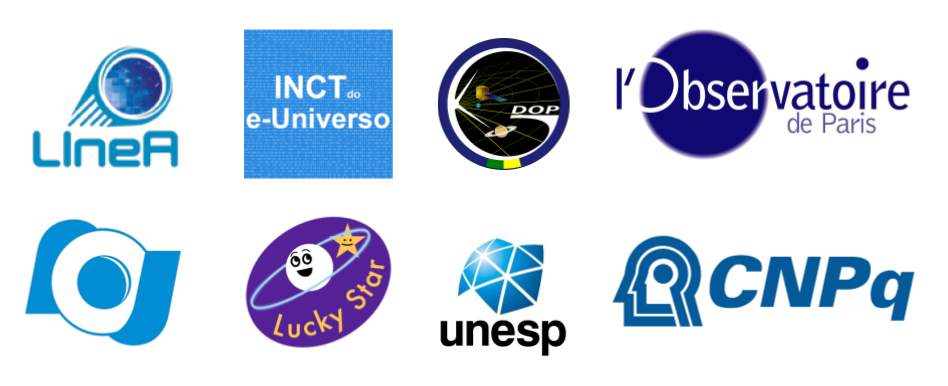
Overview
Stellar Occultations
A stellar occultation occurs when a solar system object passes in front of a star for an observer on Earth, and its shadow causes a temporary drop in the observed flux of the star. This technique allows the determination of sizes and shapes with kilometre precision and to obtain characteristics of the object, such as its albedo, the presence of an atmosphere, rings, jets, or other structures around the body (Sicardy et al. 2011, 2016, Braga-Ribas et al. 2013, 2014, 2019, Dias-Oliveira et al., 2015, Benedetti-Rossi et al., 2016, 2019, Ortiz et al., 2015, 2017, 2020, Leiva et al., 2017, Bérard et al., 2017, Morgado et al., 2019, Gomes-Júnior et al., 2020, Souami et al., 2020, Santos-Sanz et al., 2021) or even the detection of topographic features (Dias-Oliveira et al. 2017).

Figure 1: Illustration of a stellar occultation geometry. Original source: IOTA, editted by G. Benedetti-Rossi.
The SORA library
SORA is a Python-based, object-oriented library for optimal analysis of stellar occultation data. The user can use this library to build pipelines to analyse their stellar occultation’s data. It includes processes starting on the prediction of such events to the resulting size, shape and position of the Solar System object. The main modules available at version 0.2 are: star, body, observer, lightCurve and occultation. It is important to note that new modules and other improvements and implementations can be available in future versions.
A stellar occultation is defined by the occulting body (Body), the occulted star (Star), and the time of the occultation. On the other hand, each observational station (Observer) will be associated with their light curve (LightCurve). SORA has tasks that allow the user to determine the immersion and emersion times and project them to the tangent sky plane, using the information within the Observer, Body and Star Objects. That projection will lead to chords that will be used to obtain the object’s apparent size, shape and position at the moment of the occultation. Automatic processes were developed for optimising the reduction of typical events. However, users have full control over the parameters and methods and can make changes in every step of the processes.
The Classes developed within SORA were built as an integrated system, and they are controlled by the Occultation Class. Combining these Classes and the functions therein, the user can perform the complete data reduction, pre- and post-occultation. Jupyter-Notebooks with the features of each Class can be found in the example folder.
Acknowledgements
The SORA library is hosted on a GitHub repository. It was developed with support of the ERC LuckyStar, that agglomerates the efforts of the Paris, Granada, and Rio teams (1). The ERC LuckyStar is funded by the ERC (European Research Council) under the European Community’s H2020 (2014-2020/ERC Grant Agreement No. 669416). Also, this project is supported by LIneA (Laboratório Interinstitucional de e-Astronomia), INCT do e-Universo (CNPQ grants 465376/2014-2), by FAPESP (proc. 2018/11239-8), by CNPQ (proc. 300472/2020-0, 150612/2020-6), and by CAPES-PRINT/UNESP (88887.571156/2020-00) in Brazil.

Figure 2: The SORA team thanks the following institutions, groups and projects for their support: ERC Lucky Star, LIneA/Brazil, INCT do e-Universo/Brazil, UNESP/Brazil, GDOP/Brazil, Observatoire de Paris/France, Observatório Nacional/Brazil and CNPq/Brazil.
(1) The Paris, Granada, and Rio teams are professionals astronomers affiliated mainly in the following institutions:
LESIA - Observatoire de Paris, France;
Institut Polytechnique des Sciences Avancées, France;
IMCCE - Observatoire de Paris, France;
Instituto de Astrofísica de Andalucía, Spain;
Laboratório Interinstitucional de e-Astronomia, Brazil;
INCT do e-Universo, Brazil;
Observatório Nacional/MCTI, Brazil;
Federal University of Technology - Paraná, Brazil;
UNESP - São Paulo State University, Brazil;
Universidade Federal do Rio de Janeiro - Observatório do Valongo, Brazil;